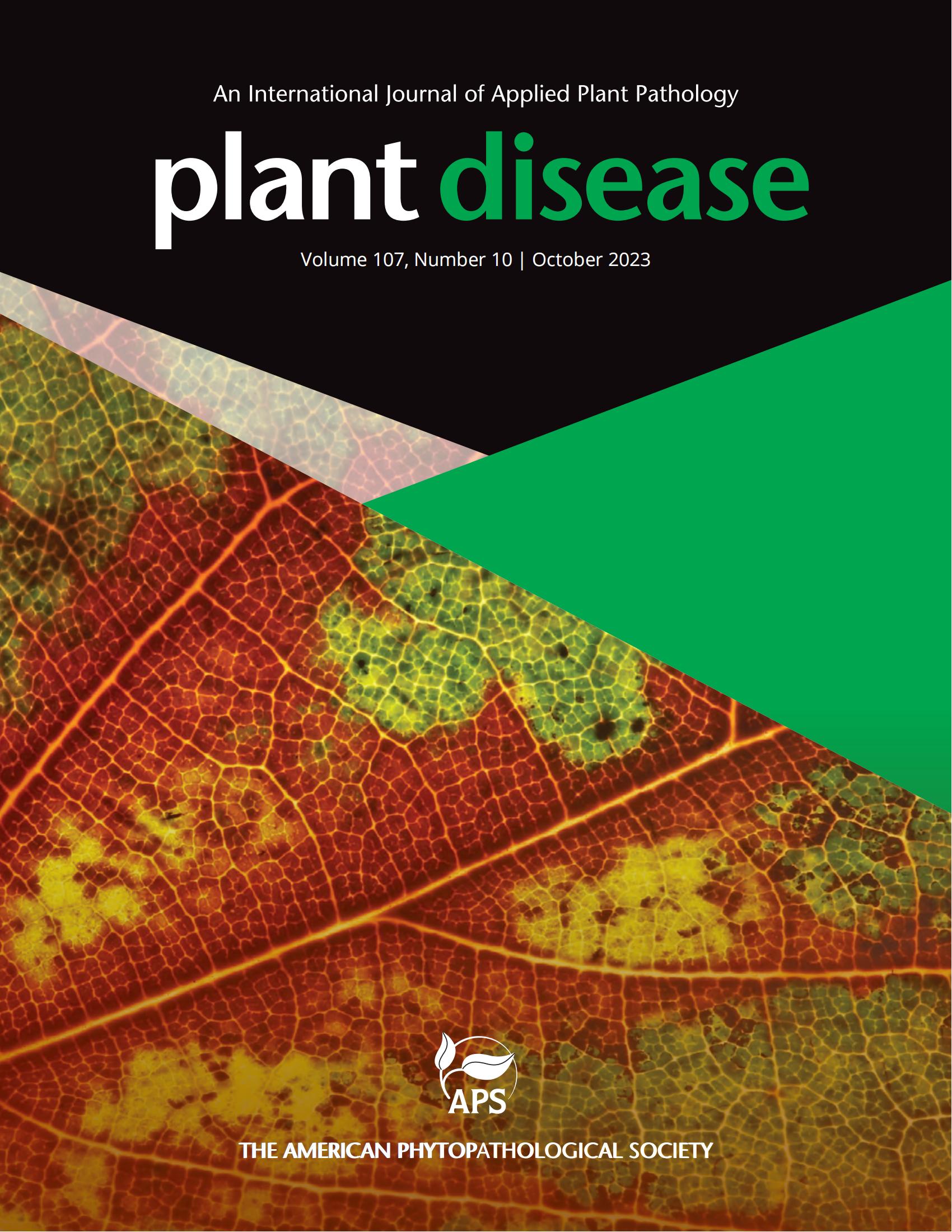A bioassay that yields quantifiable symptoms of cucurbit yellow vine disease caused by Serratia marcescens.
IF 4.4
2区 农林科学
Q1 PLANT SCIENCES
引用次数: 0
Abstract
Cucurbit yellow vine disease (CYVD), which is caused by the gram-negative bacterium Serratia marcescens and transmitted by squash bugs (Anasa tristis DeGeer), is a devastating disease of cucurbit crops that is emerging rapidly in the eastern half of the U.S. The lack of a robust pathogenicity assay for CYVD in the laboratory has hampered functional tests using genomic sequences to investigate the biology of this phytopathogen. In this study we developed and validated a bioassay that yielded consistent and quantifiable CYVD symptoms on squash in the lab. We compared inoculation by wounding with a multipronged floral pin frog to inoculation by injection in which a needle was moved in and out of the stem multiple times in each of multiple piercings to mimic the feeding behavior of squash bugs. We found that inoculation by needle injection of ≥108 CFU/ml of S. marcescens into the stem of squash (Cucurbita pepo) plants at the cotyledon growth stage reproducibly induced CYVD symptoms, whereas injecting 106 or 107 CFU/ml did not. Additionally, we found that S. marcescens induced symptoms on all of the squash cultivars tested, and induced symptoms that have not been previously reported, including stem elongation and leaf cupping. In short, through our injection approach of mimicking the natural process of S. marcescens transmission by squash bug feeding, we obtained robust and quantifiable CYVD symptoms. This laboratory bioassay provides a crucial tool for investigating the biology and pathology of this emerging pathogen and for plant breeding screens aimed at combatting CYVD.一种生物测定方法,可量化由 Serratia marcescens 引起的葫芦黄藤病的症状。
葫芦黄蔓病(Cucurbit yellow vine disease,CYVD)是由革兰氏阴性菌 Serratia marcescens 引起的,由瓜虫(Anasa tristis DeGeer)传播,是葫芦科作物的一种毁灭性病害,正在美国东半部迅速蔓延。在这项研究中,我们开发并验证了一种生物测定方法,该方法能在实验室中产生一致且可量化的 CYVD 症状。我们比较了用多头花针蛙进行伤口接种和注射接种,在注射接种中,针头在茎干的多个穿孔中进出多次,以模拟南瓜蝽的取食行为。我们发现,在南瓜(Cucurbita pepo)植株子叶生长阶段,用针刺法将≥108 CFU/ml 的 S. marcescens 接种到茎部,可重复诱发 CYVD 症状,而注射 106 或 107 CFU/ml 则不会诱发 CYVD 症状。此外,我们发现 S. marcescens 可诱导所有测试的南瓜栽培品种出现症状,而且诱导的症状以前从未报道过,包括茎伸长和叶片凹陷。总之,通过我们的注射方法,模仿南瓜虫取食 S. marcescens 的自然传播过程,我们获得了强大的、可量化的 CYVD 症状。这种实验室生物测定为研究这种新兴病原体的生物学和病理学以及旨在防治 CYVD 的植物育种筛选提供了重要工具。
本文章由计算机程序翻译,如有差异,请以英文原文为准。
求助全文
约1分钟内获得全文
求助全文
来源期刊

Plant disease
农林科学-植物科学
CiteScore
5.10
自引率
13.30%
发文量
1993
审稿时长
2 months
期刊介绍:
Plant Disease is the leading international journal for rapid reporting of research on new, emerging, and established plant diseases. The journal publishes papers that describe basic and applied research focusing on practical aspects of disease diagnosis, development, and management.
 求助内容:
求助内容: 应助结果提醒方式:
应助结果提醒方式:


